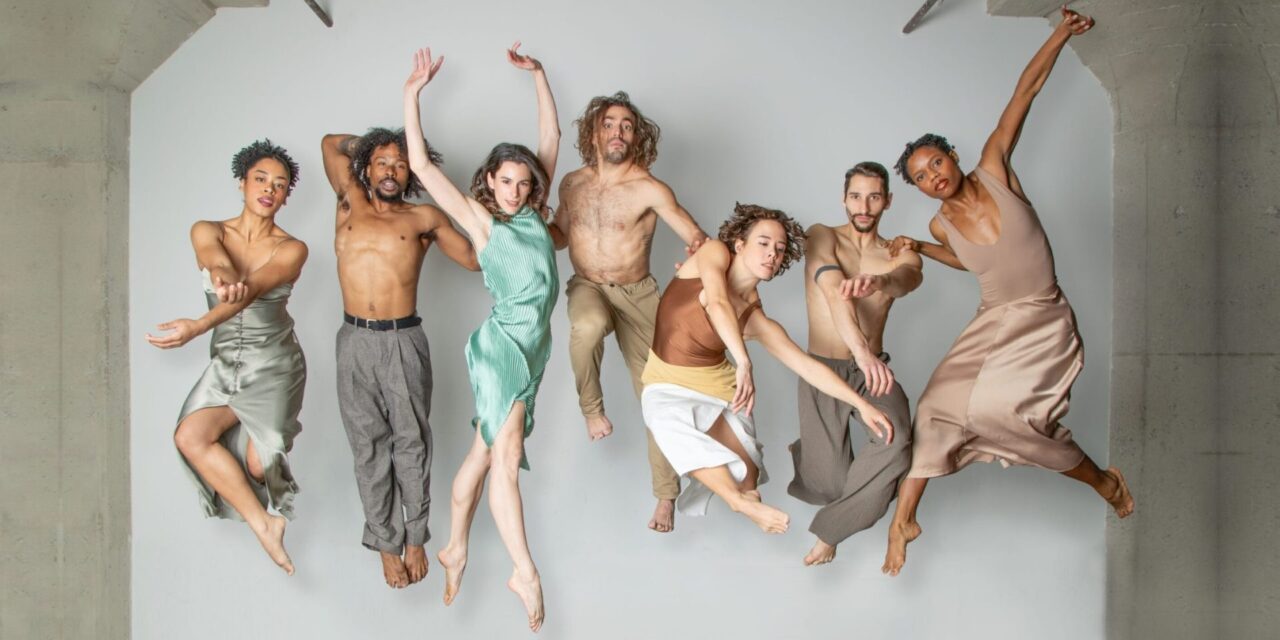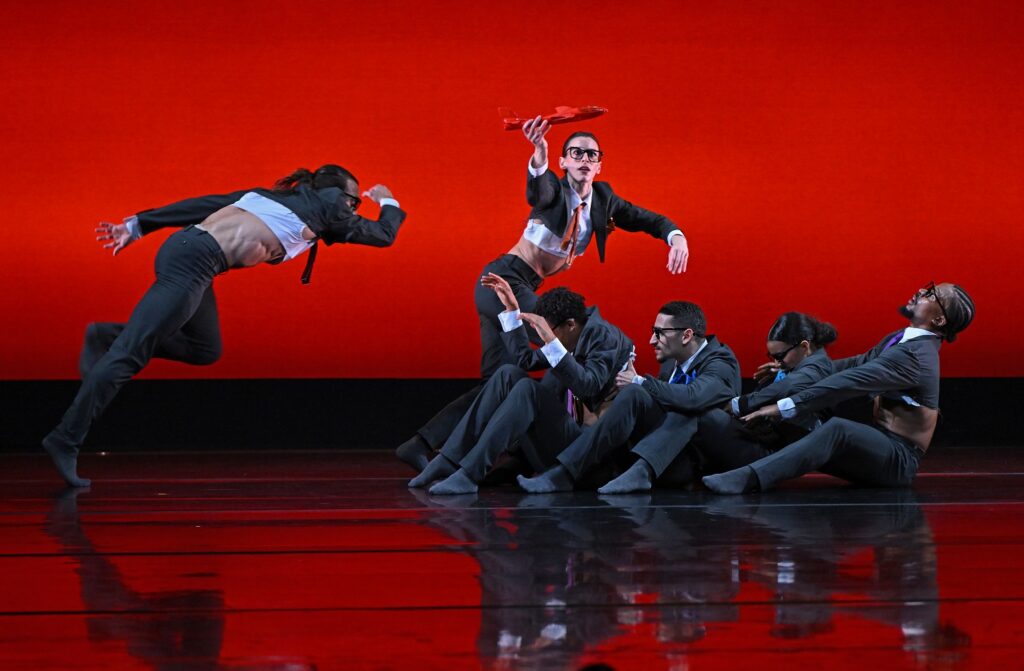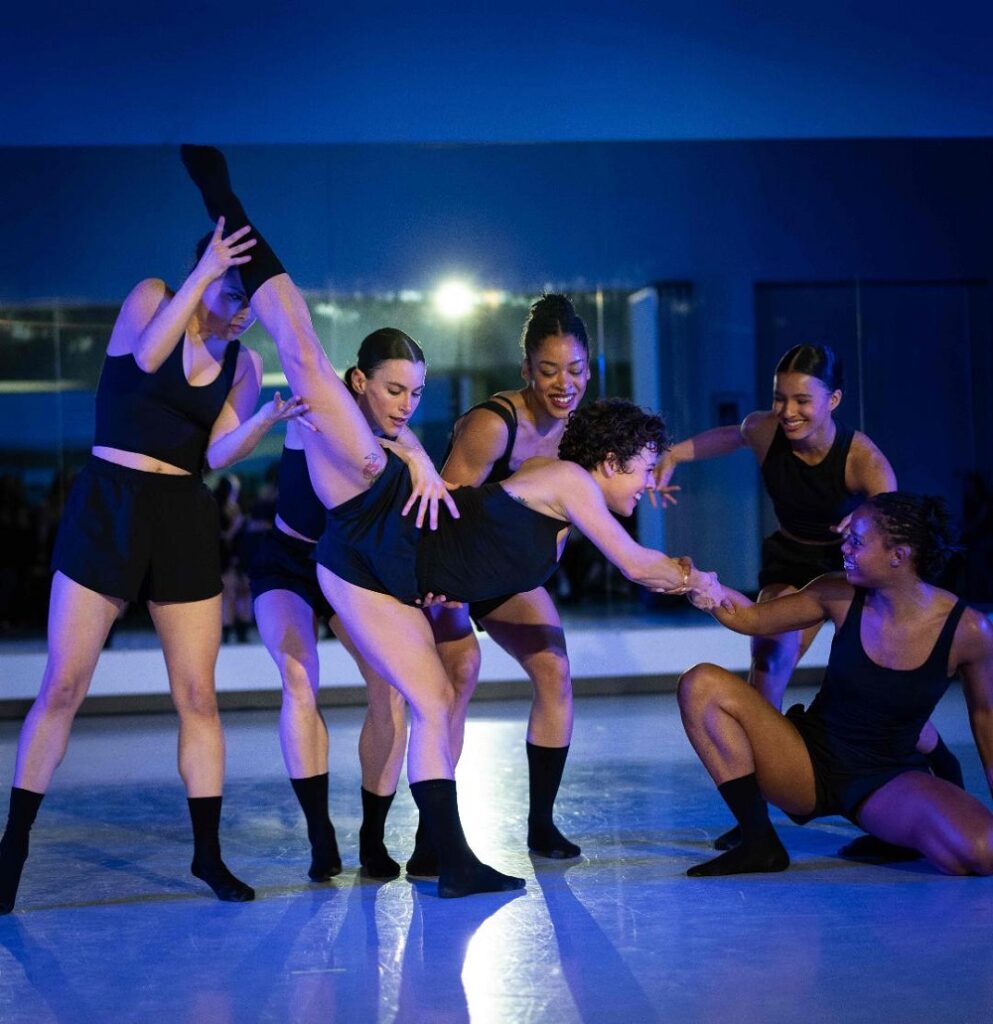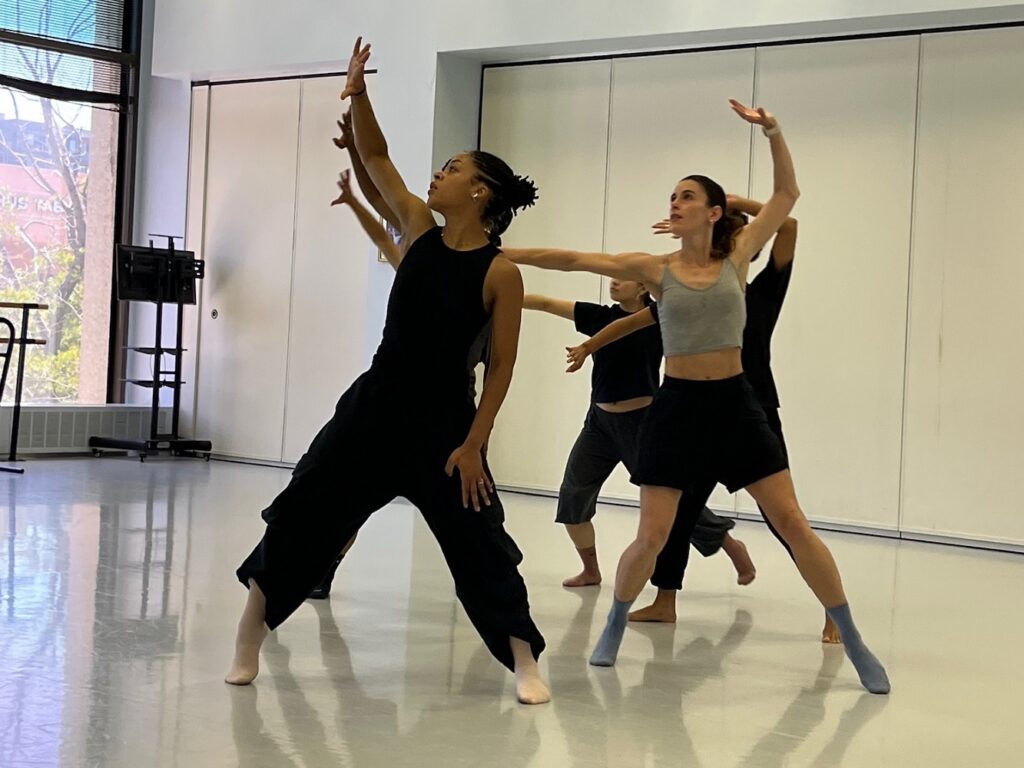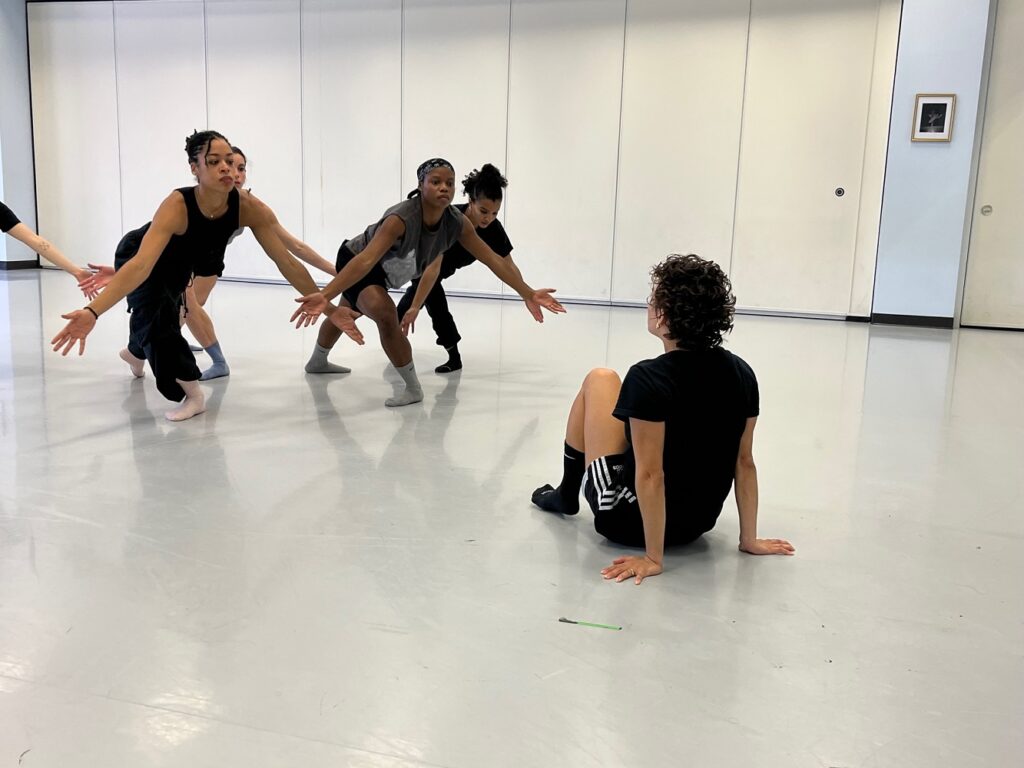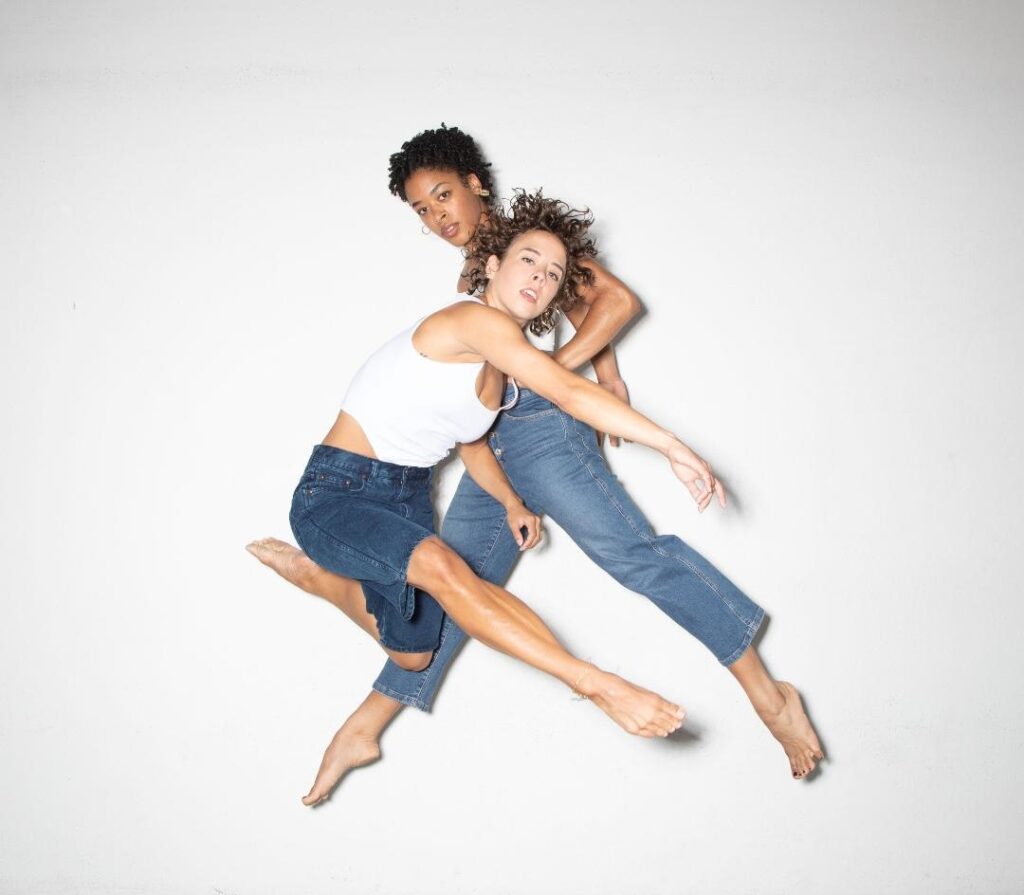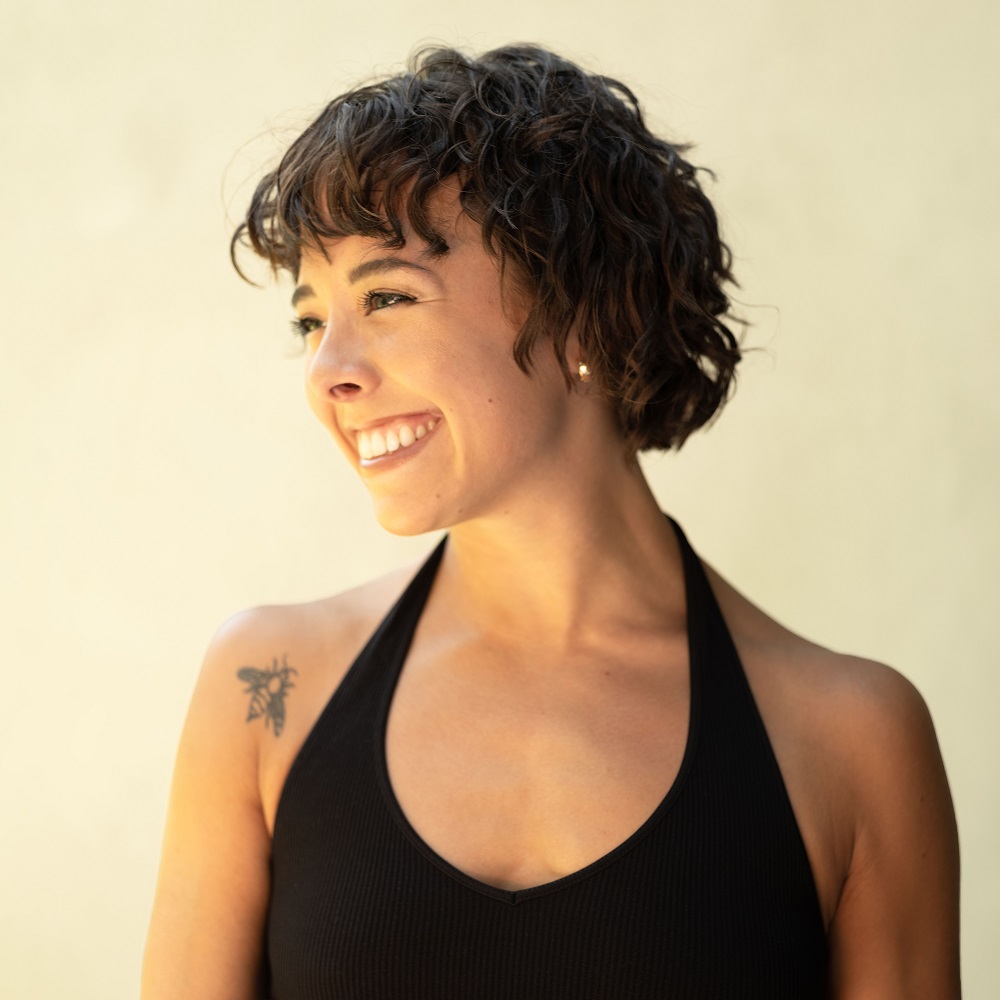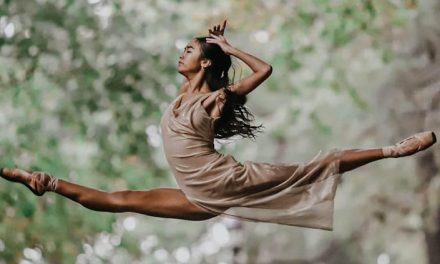Before heading east to the acclaimed Jacob’s Pillow Dance Festival, artistic director Tina Finkelman Berkett and the extraordinary dancers of BODYTRAFFIC perform at the Avalon Hollywood on Thursday, June 5, closing what has been a soaring season for the LA-based company. Their season ends with a program reflecting the year’s events that promise to propel one of LA’s most prominent contemporary companies to the next level.
For its expanded 2024-2025 season, the company announced performances at venues throughout the greater LA area, offering different programs that integrated new choreography from company dancers along with existing repertory from recognized choreographers who have been drawn by the company’s stunning dancers since BODYTRAFFIC’s founding in 2007.
Then last September, BODYTRAFFIC was one of the LA dance companies selected by the Perenchio Foundation for a game changing, million dollar, multi-year grant for operations, performances, training programs, and community outreach.
Last fall, in another high point, internationally recognized choreographer Trey McIntyre joined BODYTRAFFIC as a creative consultant, giving the company a choreographer with an ongoing relationship with the dancers.
McIntyre immediately went to work, and earlier in the season, the company premiered Mayday, his homage to Buddy Holly’s life, music and death.
Thursday’s season closing program includes Mayday along with two premieres from company members.
Company dancer/ rehearsal director Joan Rodrigez follows up last year’s highly praised, Cuban Missile Crisis-inspired Bloquea’o with a backstage-onstage excursion evoking an Afro-Cuban nightclub filled with performers’ offstage doubts behind those onstage smiles.
The third work from company dancer Jordyn Santiago, marks her professional debut as a choreographer and provides the first company work with only female company members. While June 5 will be the premiere, LA Dance Chronicle reviewer Brian Fretté saw a segment at a March studio preview and wrote:
(Santiago) reminded me of a Terpsichorean Puck, messing with our perceptions of time and rhythm all the while laughing at us for not following as fast as she can move. She utilized five other females from the company and they all tore up the space in unison and individually. It was entirely engaging and fabulous fun. She cannot help but laugh and smile and enjoy her dancing and movement to the point where it becomes infectious.
LA Dance Chronicle’s Ann Haskins spent a morning at BODYTRAFFIC studios, watching company class, plus rehearsals of Mayday, and Santiago’s premiere before sitting down with Santiago to talk about her new work and the shift from dancer to choreographer.
Haskins: I understand you trained in North Carolina. How did you get from North Carolina to BODYTRAFFIC in LA?
Santiago: I grew up in North Carolina and moved to New York for school. I had to drop out because of money, but I stayed in New York, took class, and then I just started freelancing. I ended up being able to step into my professional career as an artist. During nine years in New York, I did movies, an opera, lots of smaller gigs for companies and friends, the full spectrum of hip hop and commercials. Then I did the summer intensive for Danielle Agami and her company, Ate 9. She asked me to join the company, and I moved to LA. I worked with Ate 9 for a few months, and then we did a show. Turned out it was the last show. She told us the company in LA was folding. It was at that last Ate 9 show in LA where Tina (Finkelman Burkett) first saw me. And thank God she came to that show, because that’s how I got this job. The same day that I learned Ate 9 was closing, Tina came to the show and asked me what I was doing after that. And I was like, ‘please take me, I’m yours.’
Haskins: Let’s talk about your premiere. During the rehearsal, you remarked that the music hasn’t finished being sampled. Tell me about your music and who is doing it?
Santiago: The music producer is Rafa Aslan. He’s a bi-coastal freelancer, based in Brooklyn. I found him through a mutual friend here. She recommended him along with some other people. I went to his website and listened to some samples that he made. I was like, ‘wow!’ I felt like he could capture this world I’m trying to create. He was here in LA when I first reached out, and he’s like, ‘Hi. I’m moving back east actually.’ So we’ve been doing lots of facetime.
Haskins: What is that world you wanted to create?
Santiago: The piece is about finding my personal self-love and the journey of that search. At the root of it, I’ve always felt like an alien on Earth, like this is my first time in a physical body form. Rafa’s music captures all of these elements: It starts out super heavy, almost like my mental break, then once the group comes out, it is like the rebirth of myself. Every dancer is representative of me, and we are in this almost unearthly world. The movement is very animalistic, but at the same time also human. I am trying to bridge that sense of other worldly so it is relatable and feels like home. What I’m trying to create is a sense of rebirth, of being born again. At the end of it is where we find our joy, because we finally arrived in accepting where we are in our body. In my own life, I’ve been tackling the main themes of community and my womanhood, trying to find comfort in my femininity, in my sexuality, because I’m queer, and finding community in this world. Those elements are the main pillars inside this world that bring it back to the human side, yet all the while, it’s just a bunch of creatures living on the stage, trying to get to that end point.
Haskins: Is your thinking about the work informed at all by the fact that in dance, a lot of it involves telling dancers their bodies are not what dance wants or are insufficient, so while the impulse to dance is so basically human, dance is too often presented to dancers as something alien and unachievable for the human body.
Santiago: Basically, yes. That definitely is why I want the audience to see themselves inside of this world, weird and strange and taboo as I’m presenting it, and also as just six female identifying dancers on stage, celebrating the female body and celebrating our strengths, our weaknesses. Yeah, feeling isolated, then finding your community.
Haskins: Did you figure out any answers to your puzzles
Santiago: I did, I think, when I finished it in the last section, definitely the last two sections. In the rehearsal, you saw the first, darkest section, but there are three sections that you haven’t seen. It starts to grow in lightness and energy. Recently, after we performed the last section, like a little teaser here in the studio showcase, the main thing that I felt and the response people kept telling was that it radiated joy. They said they cried and they also laughed and smiled. And I think the main thing I’m trying to get at is where is your joy, where is your home inside of your body, and how does that relate in space to others around you, in your everyday life, in the studio, and when you’re asleep?
Haskins: Did the artistic director approach you or did you approach her? How did this commission happen?
Santiago: Tina approached me. This is my fourth season with BODYTRAFFIC. In the individual meetings with Tina, she always asked each of us, what we see as our next step after BODYTRAFFIC? That’s her main goal, to get us where we’d want to be, which I love. In my meetings, choreography was what I told her. Last year, she gave me the teens in the summer intensive and my choreography for them was a hit. After that, Tina came up to me and said, ‘Would you like to set a piece on the company?”
Haskins: Your biography lists other choreography. Is this the first time you’ve done choreography on your co-workers?
Santiago: I’ve done a lot of choreography for colleges, This is my professional choreographic debut and my first on co-workers. And I feel grateful that it’s with my fellow company members. I also love that it’s the six women, because BODYTRAFFIC doesn’t have a piece that’s only the women. I requested that.
Haskins: BODYTRAFFIC is known for bringing in notable choreographers to create or set work on its dancers. Are there lessons you’ve taken away from working with choreographers during your career that you have applied in setting your own choreography?
Santiago: Yes. I’ve been in so many processes, here at BODYTRAFFIC and outside, and I think going back to the “joy” thing, I really wanted to make it an enjoyable experience for all of the dancers. It is sort of funny, because I received a lot of advice that I should not worry about dancers’ feelings, just focus on the creative processes. I know a lot of people do that. I decided I would not. I decided to create a space in which everyone felt seen, heard, and valued, and that would allow me to pull out the beautiful parts of the dancers that I already know are there. Because I’m with them so much, I think I had an advantage since I knew what they could bring artistically. We kept it fun but have been very productive working with a short amount of time. Also, I’ve also been trying to do my homework so that when I come in, I’m ready to go. As a person, I can be quite flighty. In my head, it is always a party, but I can get work done. I had to prepare myself so that I could come in and we could just jump right in.
Haskins: Was there anything in one of your dancers that you could see or observe something in them that no one had yet really drawn out?
Santiago: All of them had something, but especially one of our newer additions, Anaya Gonzalez, who told me she hasn’t done a lot of partnering. Because the piece is all females, I’m asking them to do a lot of lifting. Later, she came up to me, ‘Wow, I’ve never done this before, but I feel myself growing as an artist.’ I cried the first time I watched the video afterwards, I could see something changing and evolving. It’s really beautiful to see where she started and now where it’s at. It’s funny that you ask that, because I was talking to my wife about it. We were just so shocked at how Anaya had grown.
Haskins: How big was the adjustment to move from New York to here?
Santiago: You know, I think it would have been a big adjustment if I hadn’t been pretty bi-coastal for a few years and spent a few months at a time here. I always told my friends that I wasn’t sure if LA was my place. Then when I actually moved here, and planted my roots, I really love it. It has kind of stolen a piece of my heart. I think as I get older, this is definitely more my place than New York is. I think New York was my 20s. I was having a blast. Now that I’m 30, I’m excited about this lifestyle in LA.
By joining BODYTRAFFIC, the pieces of my whole dance career just kind of fell in line. Finding a job in New York when I could not afford school, getting to freelance, coming to LA for Ate9 which felt like a company job for keeps only to have the company’s abrupt closing, then that leading to a job offer from Tina. It keeps being like death and rebirth, which is a theme that I love, and is in my new work. So that’s how I got to my here and now.
BODYTRAFFIC dancers are Katie García, Pedro Garcia, Anaya Gonzalez, Sierra Herrera, Alana Jones, Joan Rodriguez, Jordyn Santiago, and Grecia Cruz.
BODYTRAFFIC – This Feeling Reminds Me of You at the Avalon Hollywood, 1735 N. Vine St., Hollywood; Thurs., June 5, 7 pm, $60. Upcoming Shows and Tickets
To learn more about BODYTRAFFIC, please visit their website.
This article was edited at 9am on 5/27/25
Written by Ann Haskins for LA Dance Chronicle.
Featured image: BODYTRAFFIC – Photo by Guzmán Rosado.

